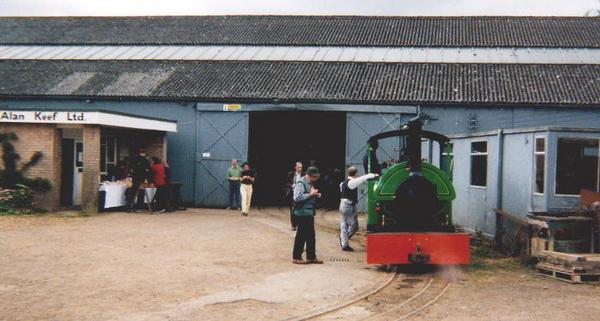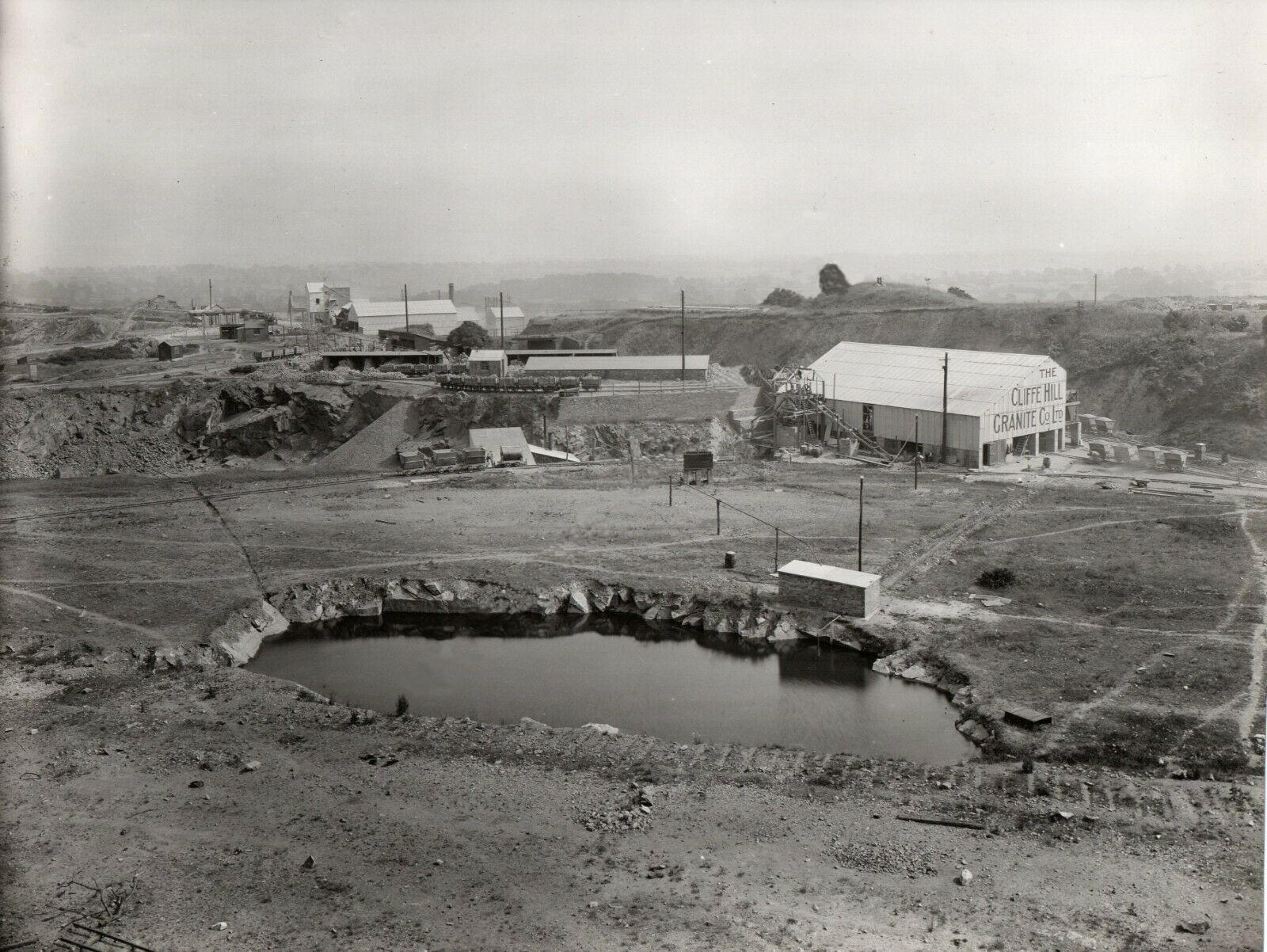|
Kerry Tramway
The Kerry Tramway was a narrow gauge railway built in 1887 to serve the timber workings and slab quarry to the south of the village of Kerry, near Newtown in mid Wales. Route The railway ran from the Cambrian Railways Kerry railway station at Glanmule to the Brynllywarch estate owned by Christopher Naylor. The line served the timber forests on the estate, as well as a slab quarry and general estate traffic. It was worked by the Bagnall locomotive ''Excelsior''. Closure In 1895 Naylor inherited Haggerston Castle and left Brynllywarch; the rolling stock of the railway was sold and the track was lifted. Reopening During the First World War there was a great demand for timber. In 1917 the government Timber Supply Department (which later became the Forestry Commission) relaid much of the tramway to serve the sawmill on the estate. The railway and timber felling operations were mainly manned by German prisoners of war under military control. During the war, the line was worked by ... [...More Info...] [...Related Items...] OR: [Wikipedia] [Google] [Baidu] |
Alan Keef
Alan Keef Ltd is a British narrow gauge railway engineering company which manufactures, overhauls, and deals in narrow gauge locomotives, rolling stock and associated equipment. The Limited Company was formed in 1975 at Cote, Bampton, Oxon, continuing what Alan Keef had already been doing for some years as an individual. In 1986 the company moved to larger premises at Lea, near Ross-on-Wye in Herefordshire. The first new loco was built in 1976. To date (2008) over eighty locos have been built – steam, diesel and electric. Most have been miniature or narrow gauge except for two standard gauge steam locos for Beamish Museum – the replicas of " Steam Elephant" and " Puffing Billy". In 2008 Alan Keef Ltd built the frames, running gear and mechanical parts for two Parry People Mover railcars for use on the Stourbridge Town branch (139001 and 139002). A number of Alan Keef's locomotives are replicas of steam locomotives but with diesel power. These are referred to as ''stea ... [...More Info...] [...Related Items...] OR: [Wikipedia] [Google] [Baidu] |
Ernest E
Ernest is a given name derived from Germanic word ''ernst'', meaning "serious". Notable people and fictional characters with the name include: People *Archduke Ernest of Austria (1553–1595), son of Maximilian II, Holy Roman Emperor *Ernest, Margrave of Austria (1027–1075) * Ernest, Duke of Bavaria (1373–1438) * Ernest, Duke of Opava (c. 1415–1464) *Ernest, Margrave of Baden-Durlach (1482–1553) *Ernest, Landgrave of Hesse-Rheinfels (1623–1693) * Ernest Augustus, Elector of Brunswick-Lüneburg (1629–1698) *Ernest, Count of Stolberg-Ilsenburg (1650–1710) *Ernest Augustus, King of Hanover (1771–1851), son of King George III of Great Britain *Ernest II, Duke of Saxe-Coburg and Gotha (1818–1893), sovereign duke of the Duchy of Saxe-Coburg and Gotha *Ernest Augustus, Crown Prince of Hanover (1845–1923) *Ernest, Landgrave of Hesse-Philippsthal (1846–1925) *Ernest Augustus, Prince of Hanover (1914–1987) *Prince Ernst August of Hanover (born 1954) * Prince Ernst ... [...More Info...] [...Related Items...] OR: [Wikipedia] [Google] [Baidu] |
Industrial Railways In Wales
Industrial may refer to: Industry * Industrial archaeology, the study of the history of the industry * Industrial engineering, engineering dealing with the optimization of complex industrial processes or systems * Industrial city, a city dominated by one or more industries * Industrial loan company, a financial institution in the United States that lends money, and may be owned by non-financial institutions * Industrial organization, a field that builds on the theory of the firm by examining the structure and boundaries between firms and markets * Industrial Revolution, the development of industry in the 18th and 19th centuries * Industrial society, a society that has undergone industrialization * Industrial technology, a broad field that includes designing, building, optimizing, managing and operating industrial equipment, and predesignated as acceptable for industrial uses, like factories * Industrial video, a video that targets “industry” as its primary audience * Industrial ... [...More Info...] [...Related Items...] OR: [Wikipedia] [Google] [Baidu] |
Cliffe Hill Mineral Railway
The Cliffe Hill Mineral Railway was a narrow gauge industrial railway that connected the Cliffe Hill granite quarry to the nearby London Midland and Scottish Railway (LMS) between Leicester and Coalville. The line opened in 1896 and operated until 1948. History Granite is reputed to have been quarried from the outcrop near Markfield in Leicestershire since Roman times. However, it was not until the 1860s that quarrying began on a commercial scale. In the late 1870s two Birmingham businessmen opened a quarry at Cliffe Hill to provide street setts and kerb stones. This quarry closed in 1887 but was revived in 1889 by Mr. J. Rupert Fitzmaurice the son of one of the original owners. Fitzmaurice equipped the quarry with then modern machinery and it quickly became a commercial success. In the first year of the new operation 630 tons of finished kerbs and 10,200 tons of broken stone were produced. Most of this was taken by horse and cart to Bagworth station away for transit by ra ... [...More Info...] [...Related Items...] OR: [Wikipedia] [Google] [Baidu] |
Amerton Railway
The Amerton Railway is a narrow gauge heritage railway in the English county of Staffordshire. It is owned by Staffordshire Narrow Gauge Railway Limited, a registered charity, and operated by volunteers. Construction of the railway started in 1990 in a field at the side of Amerton Working Farm. The first trains ran in 1992, but it was around 10 years later when the railway was completed as a full circle with two passing Loops. The collection of locomotives is primarily focused around locomotives that were either built or operated in Staffordshire. Development of the line There is the main 3 road running shed housing majority of the locomotives, operational and stored, a large workshop next door where restoration and maintenance take place, then a small covered siding is located between the workshop and carriage shed. In May 2012, the of land on which the railway is run was purchased by the railway, securing the future of operations at Amerton. On 10 August 2001 the railwa ... [...More Info...] [...Related Items...] OR: [Wikipedia] [Google] [Baidu] |
Pen-yr-Orsedd Quarry
Pen-yr-Orsedd quarry was a slate quarry in the Nantlle Valley in North Wales. It was one of the last slate quarries operating in North Wales and the last operating in the Nantlle Valley area, finally closing in 1979. History Pen-yr-Orsedd opened in 1816, owned by William Turner who was also the owner of the nearby Dorothea quarry and the Diphwys Casson quarry in Blaenau Ffestiniog. It was acquired on 1854 by John Lloyd Jones who sold it on to the Darbishire Company, owners of the Penmaenmawr granite quarries, in 1862. The new owners invested £20,000 () to expand the quarry, though with limited results; by 1871 the quarry was producing just 500 tons per year. William Darbishire took over direct management of the quarry that year and by 1882 had raised production to almost 8,000 tons. Pen-yr-Orsedd was one of the major slate producers of the Nantlle Valley. It was the last of the Nantlle quarries to commercially produce slate, closing in 1979. Narrow-gauge railway museu ... [...More Info...] [...Related Items...] OR: [Wikipedia] [Google] [Baidu] |
Lynton And Barnstaple Railway
The Lynton and Barnstaple Railway (L&B) opened as an independent railway in May 1898. It was a single track, narrow gauge railway and was slightly over long running through the rugged and picturesque area bordering Exmoor in North Devon, England. Although opened after the Light Railways Act 1896 came into force, it was authorised and constructed prior to that act. Therefore, as with all other railways, it was authorised under its own Act of Parliament and built to higher (and more costly) standards than similar railways of the time. In the United Kingdom it was notable as being the only narrow gauge line required to use main-line standard signalling. For a short period the line earned a modest return for shareholders, but for most of its life the L&B made a loss.G A Brown, J D C A Prideaux, & H G Radcliffe: ''The Lynton & Barnstaple Railway'' published by David and Charles, First Edition 1964, In 1923, the L&B was taken over by the Southern Railway, and eventually closed ... [...More Info...] [...Related Items...] OR: [Wikipedia] [Google] [Baidu] |
Diana (locomotive)
''Diana'' is a narrow gauge steam locomotive. It was built by Kerr, Stuart and Company in 1909, and was delivered to the Kerry Tramway in Mid Wales, in 1917. After varied service in the Welsh slate industry, ''Diana'' was purchased by railway enthusiast Graham Mullis in 1964. After many years at a variety of location, ''Diana'' was purchased by a Talyllyn Railway volunteer in 2014, and restored to working order in 2015. Industrial service ''Diana'' was built in 1909 by Kerr, Stuart as part of an order for six gauge locomotives for Mauritius. Although several of the locomotives in the order were sent to Mauritius, ''Diana'' wasn’t delivered and stayed at Kerr, Stuart's factory in Stoke on Trent. In 1917, the locomotive was purchased by the Home Grown Timber Committee of the Board of Trade for use on the Kerry Tramway, near Newtown, Powys in Mid Wales. It was regauged to and delivered to Kerry, Powys. The Kerry Tramway closed in 1922, though a short length was retai ... [...More Info...] [...Related Items...] OR: [Wikipedia] [Google] [Baidu] |
Wales
Wales ( cy, Cymru ) is a Countries of the United Kingdom, country that is part of the United Kingdom. It is bordered by England to the Wales–England border, east, the Irish Sea to the north and west, the Celtic Sea to the south west and the Bristol Channel to the south. It had a population in 2021 of 3,107,500 and has a total area of . Wales has over of coastline and is largely mountainous with its higher peaks in the north and central areas, including Snowdon (), its highest summit. The country lies within the Temperateness, north temperate zone and has a changeable, maritime climate. The capital and largest city is Cardiff. Welsh national identity emerged among the Celtic Britons after the Roman withdrawal from Britain in the 5th century, and Wales was formed as a Kingdom of Wales, kingdom under Gruffydd ap Llywelyn in 1055. Wales is regarded as one of the Celtic nations. The Conquest of Wales by Edward I, conquest of Wales by Edward I of England was completed by 1283, th ... [...More Info...] [...Related Items...] OR: [Wikipedia] [Google] [Baidu] |
Kerr Stuart
Kerr, Stuart and Company Ltd was a locomotive manufacturer in Stoke-on-Trent, England. History It was founded in 1881 by James Kerr as "James Kerr & Company", and became "Kerr, Stuart & Company" from 1883 when John Stuart was taken on as a partner. The business started in Glasgow, Scotland, but during this time they were only acting as agents ordering locomotives from established manufacturers, among them Falcon, John Fowler & Co. and Hartley, Arnoux and Fanning. They bought the last-named company in 1892 and moved into the California Works in Stoke to begin building all their own locomotives. Hartley, Arnoux and Fanning had also been building railway and tramway plant. This side of their business was sold to Dick, Kerr and Co. in Preston. Notable Kerr, Stuart employees * R. J. Mitchell, Premium Apprentice, later to design the Supermarine Spitfire aircraft. * L. T. C. Rolt, Premium Apprentice, later to be an author and canal/railway preservation pioneer. * T. C. B. Co ... [...More Info...] [...Related Items...] OR: [Wikipedia] [Google] [Baidu] |



